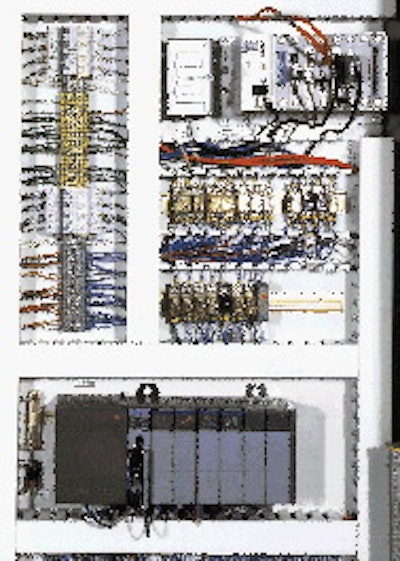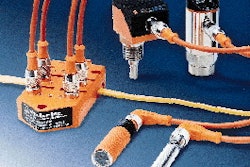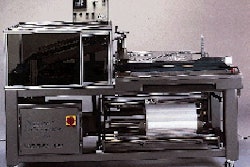For packaging equipment that requires synchronized, high-speed motion control, a PLC, which is a general-purpose controller, often has some extra help in the form of a motion controller. A motion controller is a separate component located inside the control cabinet of a packaging machine that acts as an intermediary between the PLC and the drives. It consists of specialized hardware and software specifically geared toward motion control tasks. In a machine with a motion controller, the PLC may issue commands to the motion controller to execute a desired motion "program." The motion controller, in turn, issues a rapid series of commands to the drives that carry out the desired motions. The drives convert the detailed commands into electrical power that turns the motors. Some people refer to drives as amplifiers because they in effect "amplify" incoming electrical signals into outgoing electrical power that turns the motors. Wade Latz, Hershey's manager of packaging systems engineering, illustrates with an example: "Let's say you wanted a shaft to rotate one revolution, but you wanted it to change speed, acceleration and torque every ten degrees. That speed, torque and acceleration command would come from the motion controller." Motion controllers come in a variety of shapes and styles. Hershey uses controllers from Indramat and Automation Intel-ligence. Both companies' controllers are actually compact PCs that reside inside the packaging machine's control cabinet. The actual "controller" is a software program that runs on this computer. Drives and motors A packaging machine will typically have only one motion controller, but each motor on the machine will have its own drive. A typical candy bar wrapper at Hershey, for example, might have six drives and six servo motors, with another six drives and six motors for the high-speed conveyor infeed that precisely positions the candy bar prior to wrapping. The number of "axes of motion" refers to the number of distinct elements of movement on a given packaging machine. These axes can represent separate but related movements, as in powered unwind reels and fin sealers, or a coordinated movement, such as on a robotic arm relying on three or four drives to move smoothly through three-dimensional space. A servo is a high-performance, closed-loop system in which the motor communicates the exact position of the shaft back to the drive. That's due to a special device known as an encoder (or resolver) inside the motor that continuously "reads" the position of the motor's shaft. Based on this feedback, the drive decides whether to accelerate or decelerate or even stop the motor. Not only does this provide precise positioning, it also provides repeatability, since a digital motion-control system can repeat a motion at any time simply by issuing the same commands from the motion controller. For packaging equipment, this translates into precise positioning and fast change-over. A motion controller can simply execute a different motion control program upon receiving changeover instructions from the operator. This can greatly reduce the amount of mechanical changeover that's required. In the past, mechanical linkages off a central shaft have been used to transmit and synchronize motion in machines. Not only are there more components in a mechanical system, those components must be physically changed over. Servos can eliminate the need for a line shaft and its attendant mechanical components. "We've done cost comparisons between digitally controlled machines and mechanical line shaft-based machines," says Latz. He confirms that digitally controlled packaging machines come out cheaper because they use fewer components.


























